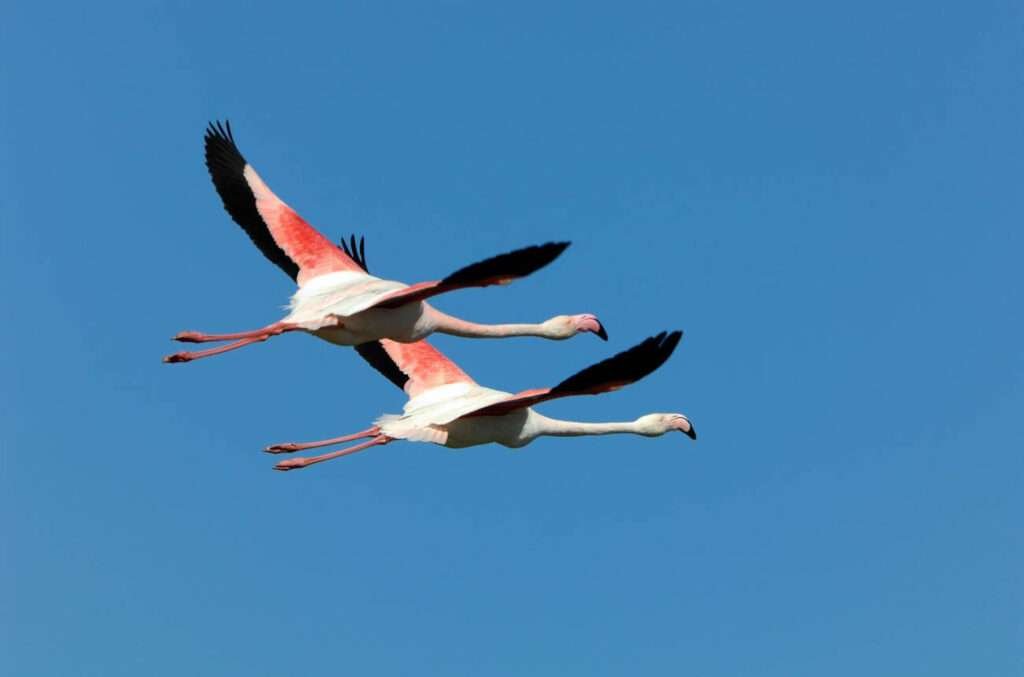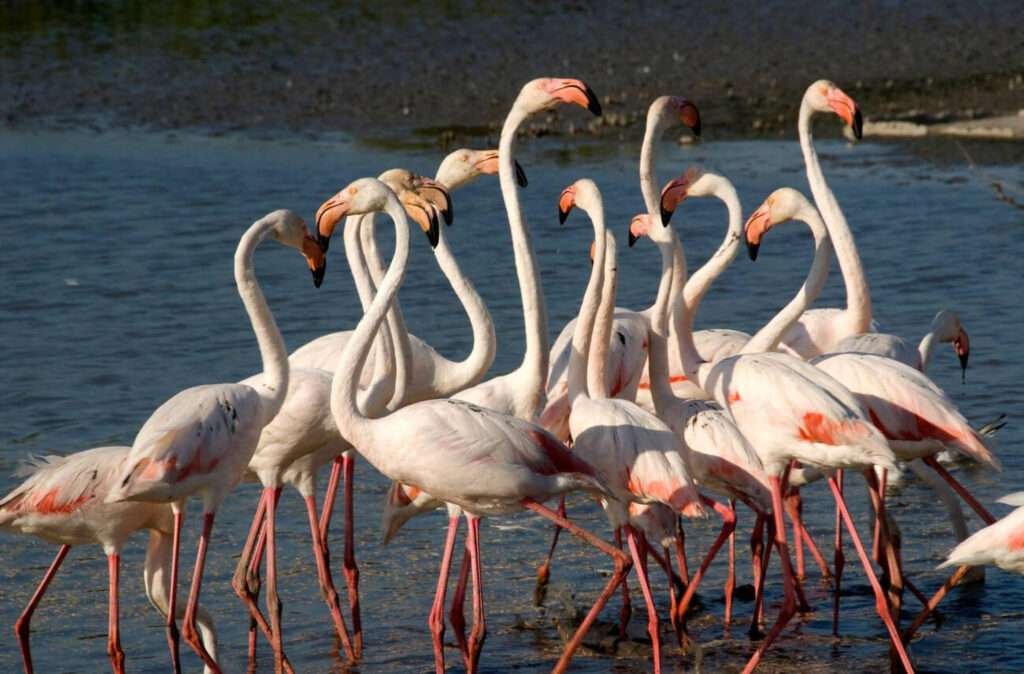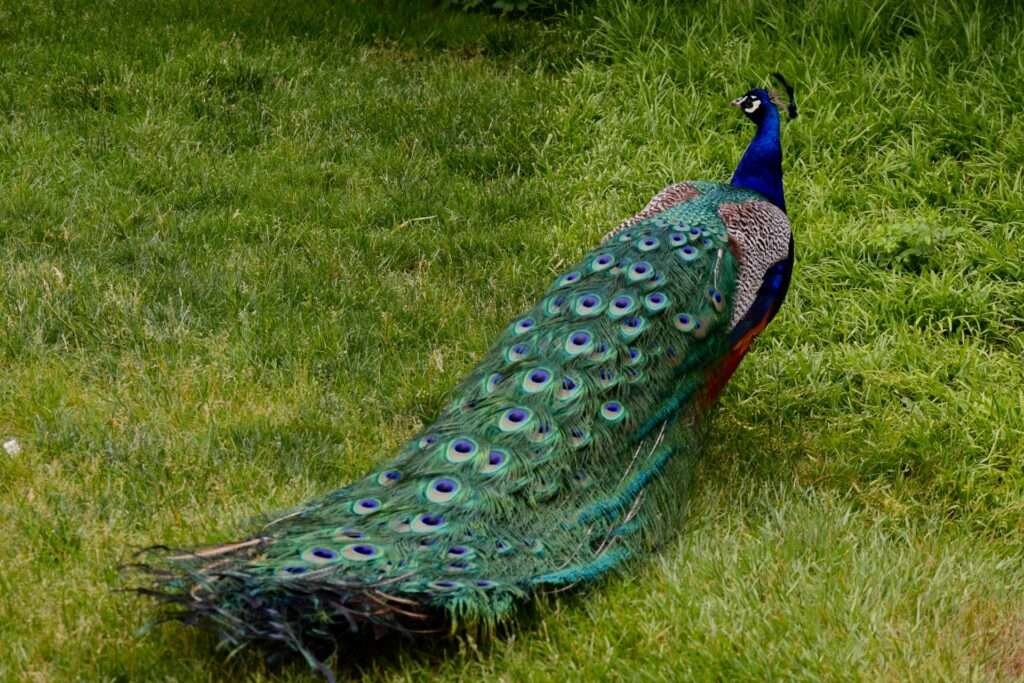Yes, flamingos can fly. They are strong fliers over long distances.
Flamingos, often recognized by their vibrant pink feathers and stilt-like legs, are more than just eye-catching birds found in zoos and on postcards. Capable of flying at speeds of up to 35 miles per hour, these birds have adapted to travel across continents in search of food and suitable breeding grounds.
Contrary to popular belief, flamingos are not merely sedentary creatures; they possess powerful flight muscles and a keen sense of direction. This allows them to migrate effectively, navigating between habitats that range from saline lakes to estuaries. Understanding their flying capabilities provides insight into their behavioural patterns, migration routes, and the overall dynamics of their populations.
Introduction To Flamingo Flight Capabilities
Flamingos possess the remarkable ability to soar across vast distances, debunking the myth that these elegant birds are flightless. With wingspans that can stretch up to five feet, these creatures are adept at both flying and wading through their aquatic habitats.
Flamingos, with their vibrant pink feathers and long, elegant legs, are iconic birds often seen balancing on one leg in shallow waters. Despite their serene appearance, these birds possess surprising flight skills that many are unaware of.
Flamingos In Popular Belief
Commonly, flamingos are thought to be ground-dwelling birds. People picture them grazing in water rather than soaring in the sky. This section will dispel myths and reveal the truth about their flight.
Purpose Of This Exploration
The aim here is to explore and understand the flight of flamingos. Readers will learn about the distances they can cover, their speed, and the reasons why they fly. Let’s uncover the mysteries of flamingo flight.

The Biology Of Flamingos
Understanding the biology of flamingos uncovers the secrets behind their ability to fly. These vibrant birds display unique physical characteristics and energy needs that support their flight capabilities.
Physical Features For Flight
Flamingos are built for the skies. Their long, lean bodies are perfectly balanced for flight. Their wings are broad and strong, with a wingspan reaching up to five feet in adults, providing the necessary lift.
- Hollow bones reduce weight
- Powerful chest muscles propel them into the air
- Feathers streamline their body for efficient air travel
Energy And Diet Considerations
Flamingos require ample energy for flight. Their diet consists mainly of algae, shrimp, and other small organisms rich in carotenoids, which aid in their stamina and vibrant colour.
| Food Source | Benefit |
|---|---|
| Algae | Energy for long flights |
| Shrimps | Strength for muscles |
| Small organisms | Essential nutrients |
Eating these foods ensures that flamingos stay energized. They filter-feed in shallow waters, ingesting large quantities to meet their high metabolic needs.
Flight Mechanics In Birds
Many people wonder if the vibrant flamingos can take to the skies. These birds are just as capable of flight as they are of standing on one leg. Understanding flight mechanics in birds reveals how flamingos achieve this remarkable feat.
Basic Principles Of Avian Flight
Birds are masters of the air, and their ability to fly hinges on key principles:
- Lift: Generated by wing shape and movement.
- Thrust: Provided by powerful wing muscles.
- Drag: Minimized by sleek bodies and feathers.
- Weight: Balanced for optimal flight efficiency.
These principles ensure that birds like flamingos can not only take off but also soar and glide.
Adaptations Unique To Flamingos
Flamingos are built for flying with their own unique set of adaptations:
| Feature | Function |
|---|---|
| Long Wings | Provide lift and enable long-distance flights. |
| Long Legs | Aid in takeoff and landing. |
| Webbed Feet | Act as rudders during flight. |
| Keel | Anchors strong flight muscles. |
Together, these features equip flamingos for their aerial journeys, proving that these pink birds are as graceful in the air as they are on land.

Flamingo Migration Patterns
Flamingos are not just beautiful pink birds that stand on one leg but also skilled fliers capable of travelling great distances. Their migration patterns are a testament to their adaptability and survival instincts.
Understanding Seasonal Movements
Flamingos follow distinct migration patterns tied to the seasons. They move in response to changes in water levels and food availability. During dry spells, they may travel hundreds of miles to find suitable habitats.
- Wet Season: Ideal for breeding; flamingos stay put.
- Dry Season: Forces flocks to migrate for resources.
Navigational Skills During Flight
Flamingos possess remarkable navigational abilities. They fly both day and night, using the sun and stars to guide their way.
| Time of Day | Navigational Tool |
|---|---|
| Day | Sun position |
| Night | Stars and moon |
They also rely on landmarks and Earth’s magnetic field to find their destination. These skills are crucial for their survival and successful migration.
Comparative Analysis With Other Birds
Let’s explore how flamingos compare with other birds in flight. This analysis will look at their size and flying techniques.
Flamingos Versus Other Large Birds
Flamingos are known for their vivid pink feathers and long legs. But how do they stand up against other large birds when it comes to flying? Here’s a quick comparison:
| Bird | Wing Span | Weight |
|---|---|---|
| Flamingo | 140-165 cm | 2-4 kg |
| Eagle | 180-230 cm | 3-6 kg |
| Albatross | 240-320 cm | 8-12 kg |
Unlike eagles and albatrosses, flamingos have lighter bodies relative to their wing span.
Flight Strategies Across Species
Different birds use unique strategies to fly. Let’s look at how flamingos do it compared to others:
- Flamingos gain speed on the ground before lifting off.
- Eagles use powerful wing beats to soar high.
- Albatrosses glide over oceans, rarely flapping.
Flamingos must run to build up speed, making their takeoff quite a sight.
Threats To Flamingo Flight
Threats to Flamingo Flight are critical to understand, as they impact survival. Flamingos can fly, but various threats challenge this ability. Let’s explore these threats.
Environmental Challenges
Flamingos face significant environmental threats:
- Climate change affects their migratory patterns.
- Extreme weather can destroy their nesting sites.
- Water pollution reduces food availability.
These changes force flamingos to fly longer distances, risking their energy reserves.
Human Impact On Flamingo Habitats
Human activities also threaten flamingo habitats:
- Lakes dry up due to water diversion for agriculture.
- Coastal development destroys breeding grounds.
- Tourism disturbs their natural habitats.
Such disruptions push flamingos to abandon their homes, endangering their flight capabilities.
| Threat | Impact on Flamingos |
|---|---|
| Climate Change | Alters migration depletes food. |
| Human Activities | Destroys habitats, and forces relocation. |
This table shows how each threat affects flamingo populations, emphasizing the urgency of addressing these issues.
Observing Flamingo Flight In The Wild
Imagine standing in a tranquil setting as pink-hued wings stretch across the sky. Flamingo flight is a breathtaking sight. These birds are not just lawn ornaments; they are skilled fliers. This blog section sheds light on how to witness this spectacle in the wild.
Best Locations For Viewing
Flamingos paint the sky in various parts of the world. To see them soar, visit these spots:
- Camargue, France – Europe’s largest river delta and home to vibrant flocks.
- Yucatan Peninsula, Mexico – Celestun and Rio Lagartos boast large populations.
- Rift Valley Lakes, Kenya – Lake Nakuru and Lake Bogoria offer a pink panorama.
Tips For Ethical Bird Watching
Respect for nature ensures a safe environment for flamingos. Follow these tips:
- Keep Distance – Use binoculars or zoom lenses to avoid disturbing the birds.
- Stay Quiet – Loud noises can frighten flamingos, disrupting their natural behaviour.
- Do Not Feed – Feeding can harm flamingos by altering their diet and behaviour.
Flamingo Conservation Efforts
Flamingo Conservation Efforts focus on protecting these vibrant birds and their habitats. While flamingos can fly, which is crucial for survival, they face threats that conservation programs aim to mitigate.
Role Of Flight In Conservation
Flight plays a pivotal role in flamingo conservation. These birds migrate to escape extreme weather and find food, and their ability to fly helps them survive in changing environments.
- Migration: Flamingos travel to safe breeding grounds.
- Adaptation: They fly to new habitats when needed.
- Genetic diversity: Flight enables the mixing of different flamingo populations.
Global Initiatives And Success Stories
Conservation groups worldwide work tirelessly to protect flamingos. Their efforts often lead to inspiring success stories.
| Initiative | Location | Impact |
|---|---|---|
| Wetland Restoration | Caribbean | Breeding sites improved for flamingo populations. |
| Anti-Poaching Measures | Africa | Flamingos are protected from illegal hunting. |
| Eco-Tourism | South America | Income generated for local communities; flamingo habitats conserved. |
These actions show how global collaboration can lead to real change. They secure a future where flamingos continue to soar freely.
Myths And Facts About Flamingos
Flamingos are some of the most recognizable and intriguing birds in the world. They spark curiosity and wonder, often leading to a mix of myths and facts about their behaviour and abilities. Let’s explore and clarify some of these points.
Debunking Common Misconceptions
Many believe flamingos cannot fly, picturing them as strictly land-bound creatures. This is untrue. Flamingos are strong fliers capable of travelling up to 600 km overnight. They have powerful wings and can reach 50-60 km/h speeds.
Another common myth is that flamingos are always pink. In reality, their colour comes from their diet. Young flamingos are grey or white. They turn pink from eating algae and crustaceans rich in carotenoids.
Surprising Realities Of Flamingo Behavior
Flamingos are social birds often seen in large groups. They perform synchronized dances to build bonds and communicate, including head-turning, wing-flapping, and marching in unison.
- Flamingos can drink boiling water. They live in hot habitats and can sip near-boiling water from geothermal springs.
- They sleep on one leg to conserve body heat and balance. This unique behaviour still puzzles scientists.
- Flamingos build mud towers for nests. They shape them with their beaks, creating a safe place for their eggs.
Final Thoughts On The Flight Of Flamingos
The grace and beauty of flamingos are undeniable. Yet, their ability to fly often astonishes many. These iconic birds, known for their vibrant pink hues and one-legged stance, are also adept fliers. This post has explored flamingos’ remarkable flight capabilities.
Recap Of Key Findings
Flamingos can indeed fly, and they travel long distances when migrating. Their large wings and strong, flexible muscles allow them to soar gracefully. Typically, flamingos fly at speeds of 40-50 kilometres per hour. They can reach heights of 4,000 to 5,000 meters during flight.
Flamingos take off with a running start in groups called flocks. They use both wind currents and thermals to conserve energy mid-air, which is essential for their long journeys. Flamingos are most active during the night, preferring to fly in cooler temperatures.
Future Directions For Research
Despite much we have learned, questions remain. Scientists aim to study flamingo flight patterns more extensively. They wish to understand how climate change and habitat destruction affect these birds. The research will focus on:
- Migration routes: GPS tracking can provide precise data on travel paths.
- Energy expenditure: How much energy do flamingos use during long flights?
- Conservation strategies: Ways to protect their natural habitats are crucial.
Advanced technology, such as satellite telemetry, allows researchers to gather new insights. These insights will guide conservation efforts and enhance our understanding of these fascinating creatures.
Frequently Asked Questions
Why Don’t Flamingos Fly At The Zoo?
Flamingos may not fly at zoos due to wing clipping, limited space, or to ensure their safety and prevent escape.
Can Flamingos Fly Long Distances?
Flamingos can fly long distances, covering hundreds of miles in a single flight. Their strong wings and lightweight bodies facilitate efficient travel.
Why Does A Flamingo Lose Its Pink?
A flamingo may lose its pink colour if its diet lacks carotenoid-rich foods like algae and shrimp, which provide the natural pigments.
How Aggressive Are Flamingos?
Flamingos are generally not aggressive creatures. They exhibit aggression mainly during the breeding season to protect their territory. Outside of this period, they are typically peaceful and social birds.
Conclusion
Flamingos have the remarkable ability to soar across great distances, showcasing their adaptability and strength in the wild. Remember, these vibrant birds are not just a spectacle on the ground; their aerial journeys are equally captivating. Embrace the wonder of flamingo flight—nature’s vivid dance in the sky.




